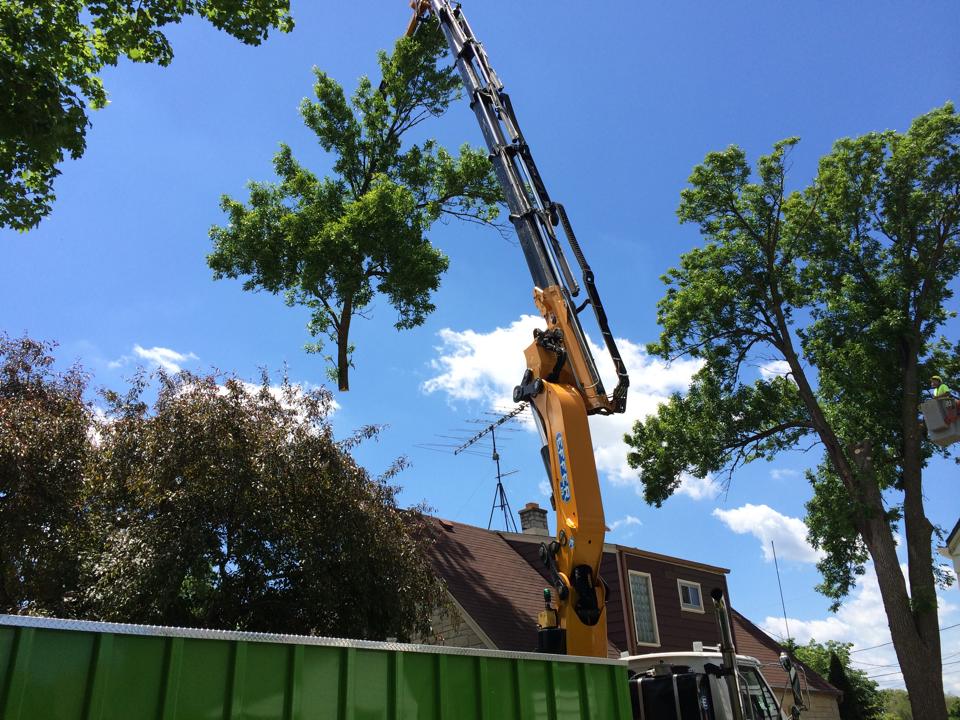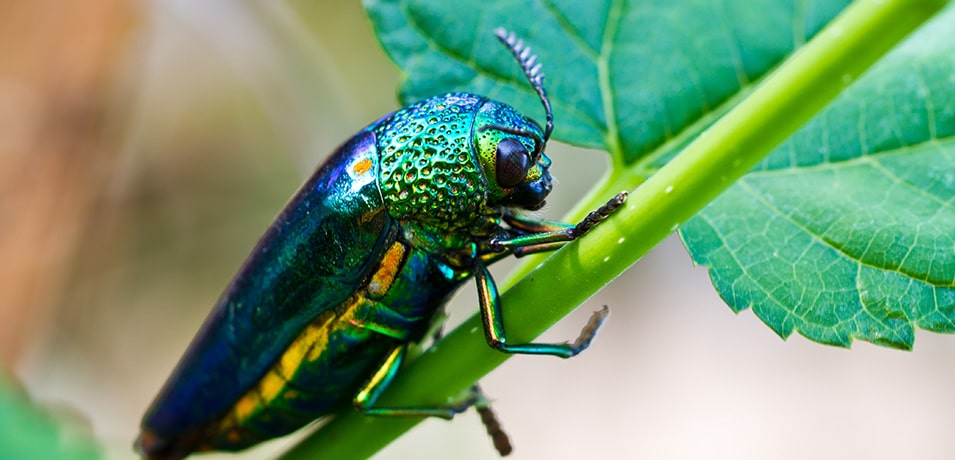Trees are an essential part of a healthy ecosystem. Sick, dying, or dead trees on your property can result in the loss of animal habitat, a reduction in clean oxygen, mold growth which can spread to your home, and much more. In addition, dead or sick trees can lower your property value. Strong, healthy trees provide incredible benefits to the look and value of your property. Just as diseased trees can spread disease to others, healthy trees help promote a healthy environment. Keep your trees healthy through our tree diagnostic and treatment care plan. Our ISA Certified Arborists provide regular inspections, tree fertilization, pruning, trimming, and complete tree maintenance services.
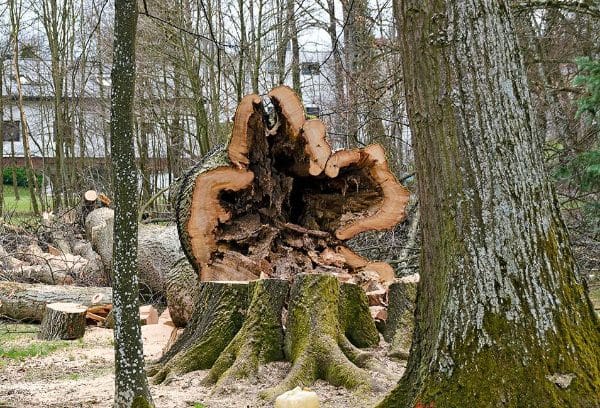
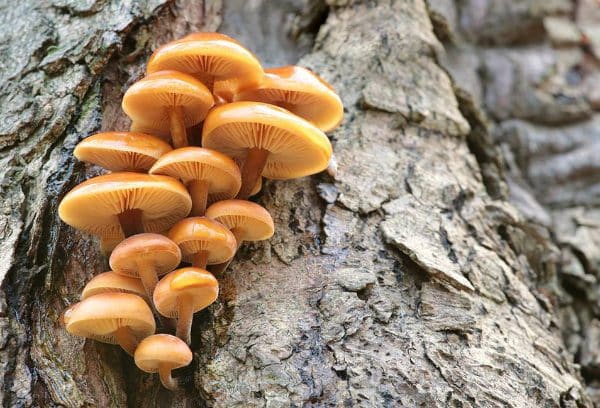
Dothistroma Needle Blight is a fungal disease that affects conifer trees in Wisconsin. It primarily affects pine and spruce trees and can cause defoliation and death of the tree. Let’s discuss how to identify a tree that is diseased with Dothistroma Needle Blight.
Signs a tree may have Dothistroma Needle Blight
The first visual sign of Dothistroma Needle Blight is yellowing and browning of the needles. This is usually found on the lower branches of the tree. The needles will often turn yellow or tan and then develop brown or black bands near the base. As the disease progresses, the needles will fall off the tree, leaving only the branches.
Another way to identify a diseased tree is to look for small black fruiting structures on the needles. These structures are known as pycnidia and are the reproductive structures of the fungus. They can be seen with the naked eye and are often located near the base of the needle.
What To Do Now
If you see the signs of Needle Blight disease, it is time to give us a call so we can have one of our ISA Certified Arborists diagnose your tree or trees.
Like Oak Wilt, it is important to act quickly if you suspect that a tree is infected with Dothistroma Needle Blight. Infected conifer trees can quickly spread the disease to neighboring trees and can cause extensive damage.
What We Do To Treat Needle Blight
We trim off infected branches and do injections with fungicide.
It is important to take preventative measures to avoid the spread of Dothistroma Needle Blight. This includes trimming trees during the dry season to prevent the spread of spores, avoiding overhead irrigation, and avoiding planting susceptible tree species in areas where the disease is known to be prevalent.
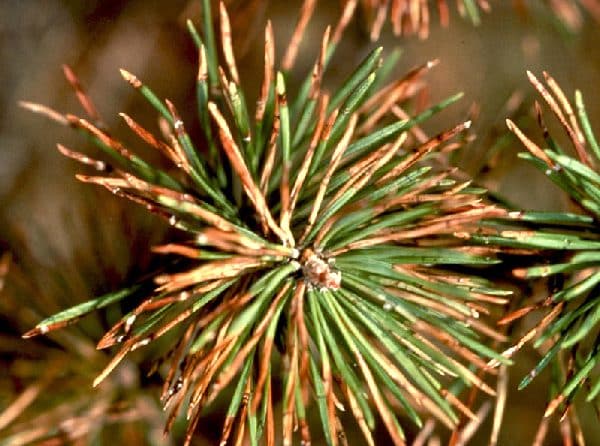
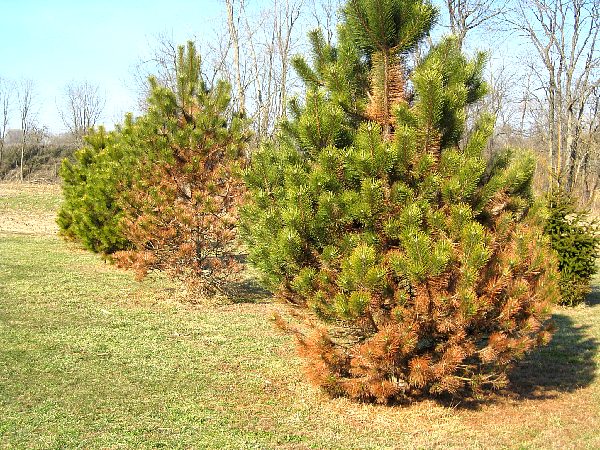
Maple Tar Spot is a fungal disease that affects maple trees throughout Wisconsin. It causes unsightly black spots to form on the leaves of the tree, but it does not typically cause significant harm to the health of the tree, directly, but the side effects can be harmful.
It’s Easy to Spot (Pun Intended)
The first sign of Maple Tar Spot is the appearance of small, yellowish-green spots on the leaves of the tree. These spots will gradually grow larger and turn black. The spots will often merge together, creating larger patches on the leaves. The black spots can also appear on the twigs and branches of the tree.
While Maple Tar Spot does not typically cause significant harm to the tree, it can cause the leaves to fall prematurely. This can weaken the tree and make it more susceptible to other diseases or pests. In severe cases, Maple Tar Spot can also cause a reduction in the tree’s ability to produce energy through photosynthesis.
Time to Make a Decision
Treatment options for Maple Tar Spot are not always necessary. However, if the appearance of the black spots is causing aesthetic issues or if the tree is suffering from significant leaf drop, treatment may be necessary. This may include having an ISA Certified Arborist apply fungicide treatments to the tree and trim away infected branches.
Fungus and mold can have significant impacts on the health and vitality of trees in Wisconsin. From degrading leaves to stunted growth, they can cause serious damage to your trees and leave your property looking ragged. Below, we will discuss how to identify a tree that is affected by fungus and mold.
How to Identify Fungus & Mold on Your Trees
The first sign of fungal or mold infection in a tree is often the appearance of unusual growths or discoloration on the bark or leaves of the tree. These growths can vary in color and texture, and may be powdery, slimy, or fuzzy in appearance. In severe cases, the growths may be large and cause significant deformations in the tree’s bark or branches.
Another sign of fungal or mold infection is the appearance of mushrooms or other types of fungi growing around the base of the tree. This is often a sign that the fungus has penetrated deep into the root system of the tree and is causing significant damage to the tree’s health.
In addition to visible signs of fungal or mold infection, trees may also exhibit other symptoms such as yellowing or browning of leaves, premature leaf drop, or stunted growth. These symptoms can be caused by a wide range of factors, but fungal or mold infection is a common cause. Having a certified arborist inspect your trees for the exact cause is critical to getting your trees back to good health.
Taking Action
If you suspect that a tree is affected by fungus or mold, it is important to take action immediately. Russ’s Tree Service with our ASI Certified Arborists can quickly identify the problem and administer treatment. Depending on the severity of the infection, treatment may involve pruning infected branches, applying fungicide to the tree, or even removing the tree entirely to prevent spread to neighboring trees.
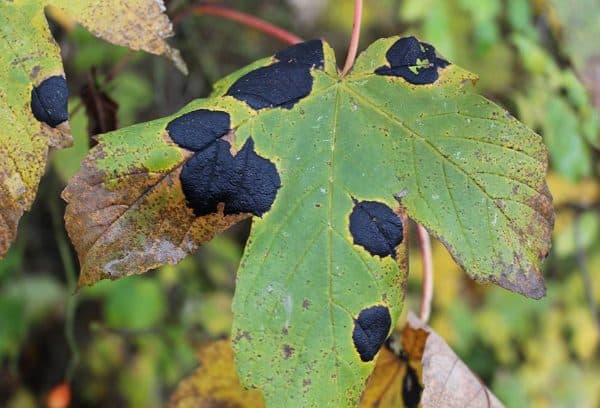
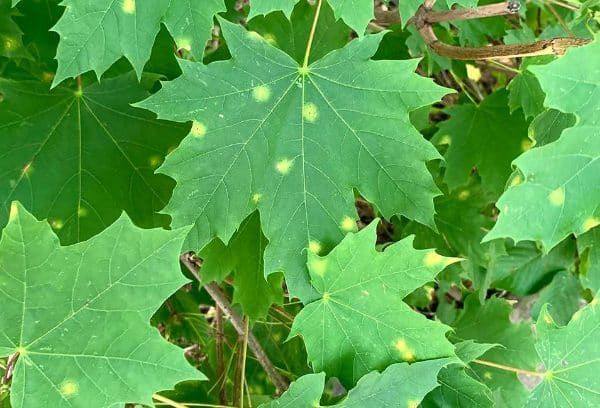
Oak Wilt disease is a serious problem for trees in Southeast Wisconsin, including the Milwaukee & Waukesha County area that our expert ISA Certified Arborists service. It is caused by a fungus that invades the vascular system of Oak Trees, causing them to wilt and die. Below, we will discuss how to identify a tree that is diseased with Oak Wilt disease and what you can do about it.
Signs an Oak Tree has Oak Wilt Disease
The Leaves
One of the first signs you will recognize on an Oak Tree with Oak Wilt Disease is wilting or browning of the leaves. The wilted leaves may appear scorched and will often be located on the outer edges of the canopy. As the disease progresses, the leaves will continue to wilt and fall off the tree.
The Bark
Another way you can identify a diseased tree is to look for discoloration in the bark. The bark may appear discolored or stained, with a dark streak running along the grain of the wood. The discoloration may be more noticeable near the base of the tree, where the fungus is likely to have entered.
What You Need to Do
If you see any of the visual signs of Oak Wilt Disease, it is time to give us a call so we can have one of our ISA Certified Arborists run a test to confirm if your tree or trees are infected.
It is important to take action immediately if you suspect that a tree is infected with Oak Wilt Disease. Infected trees can spread the disease to neighboring trees through their roots, and the disease can rapidly spread through a forest.
Our Treatment Options for Oak Wilt Disease
If discovered early enough, there are a couple things that we will do to try and save your infected tree or trees. The first step is pruning your tree’s infected branches. Second, injecting the tree with fungicide is the best chance at stopping the spread and killing the fungus within the tree. Often, this requires additional treatments.
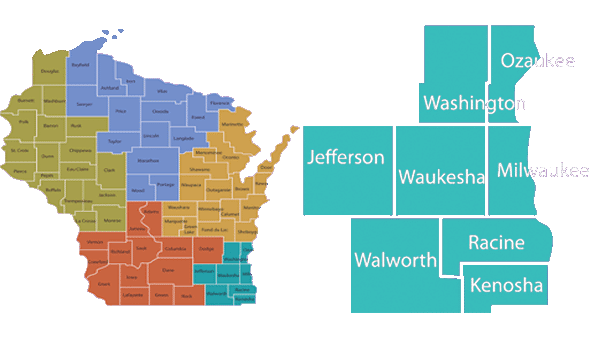
All or parts of:
Racine County, Kenosha County, Walworth County, Jefferson County, Washington County, & Ozaukee County.
Big Bend, Brookfield, Butler, Delafield, Dousman, Eagle, Elm Grove, Genesee Depot, Hartland, Lac La Belle, Lannon, Menomonee Falls, Merton, Mukwonago, Muskego, Nashotah, New Berlin, North Lake, North Prairie, Oconomowoc, Oconomowoc Lake, Okauchee, Okauchee Lake, Pewaukee, Summit, Sussex, Vernon, Wales, Waterville, Waukesha
Bayside, Brown Deer, Cudahy, Fox Point, Franklin, Glendale, Greendale, Greenfield, Hales Corners, Milwaukee, Oak Creek, River Hills, St Francis, Shorewood, South Milwaukee, Wauwatosa, West Allis, West Milwaukee, Whitefish Bay
